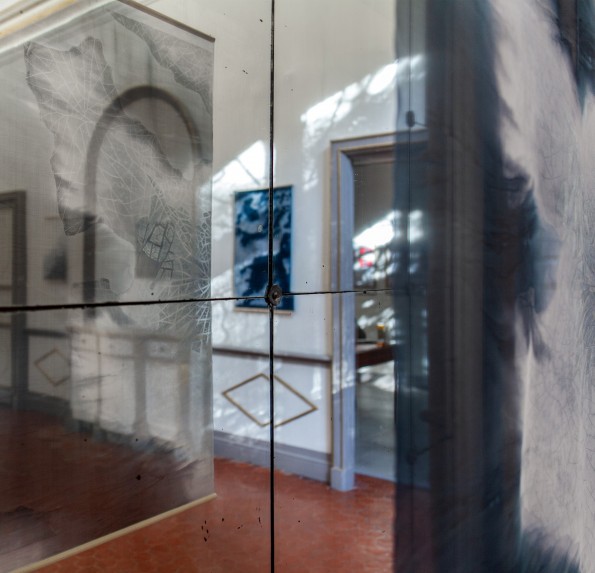Mémoire Désir


The artist works intuitively and empirically, giving free reign to her instinct. She uses needlepoint embroidery as an extension of her work as a visual artist, drawing her inspiration principally from nature, both at a micro and macro level.
Her primary approach could be defined as a search for biomimicry and the poetic evocation of organic landscapes. She also shares her vision of the raw materials she carefully collects. Her gatherings, once transformed and enhanced, become a palette of textures that allow her to create a hypnotic and meditative experience.
Born in 1989 in Toulouse, Clémentine Brandibas graduated with a DMA (Degree in Métiers d'Art) from École Duperré in 2011, specialising in embroidery. In 2018 her embroidery work was twice rewarded with the Prix Jeune Création des Métiers d'Art and the regional prize for Ateliers d'Art in France. She currently lives and works in the Bordeaux region.
- What drew you to the techniques of embroidery?
Around fifteen years ago, I had a true love at first sight for embroidery. I found this savoir-faire extremely rich in techniques and I saw in particular the potential for subtleties in the textile language that it offered. My way of working is in a large part influenced by philosophical principles of chinese pictorial art and embroidery that revealed the medium allowing me to express the most truly living movement of nature, and pay homage to it.
- How do you think your work has evolved through the years? How do you think it could change in the future?
At the heart of my work is creating poetic works of art, of organic inspiration by experimenting and developing my knowledge of techniques as much as possible. For several years, different players in the area of artisan craft, of art or design have called me to put my artistic vision and knowledge of techniques to the fore for their project of collaboration. In the ideal world I would like to continue developing these two aspects of my work because they both fascinate me and are, I think, complementary.
- Is there something or someone who particularly inspires you in your work?
I draw a large part of my inspiration from extremes in nature, in its mechanisms, textures and structures. I am interested a lot in the transformation of the material in general, and right now for example I am fascinated by the work of the earth: ceramic, as well as the principle of crystallisation and cracking.
- How have you succeeded in translating the environment around you in your works?
Nourished by visual inspiration, memories and observations, I follow the work processes which lean towards the bio and that materialise the notion of slow, fragile, precious crossing. I also liked playing with the ambiguity between figurative and abstract, I would like that the viewer of my works is open and favourable to this dream.
The compositions of my works often evoke the point of an omniscient observer surveying the large reliefs, inaccessible, while detailing the molecular anatomy of this same landscape material.
- You talk about how it evokes something hypnotic and meditative. Is this the case when you embroider?
Yes, it happens that in moments of intense concentration and repetition of stitches I lose track of time and get carried away by a creative movement that is based on the pure intuition of the hand and the heart.

